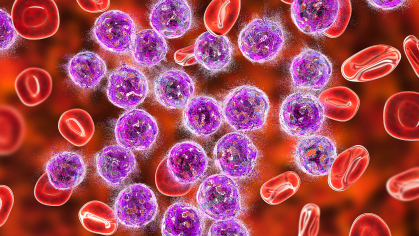Autism Rates Hit Record High, With One in 31 Children Affected, CDC Reports

Autism rates in the United States have reached a record high, with about one in 31 children (3.2%) identified with autism spectrum disorder (ASD), according to a report released by the Centers for Disease Control and Prevention (CDC) on April 15.
This represents a 22% increase since 2020 and a 375% increase since monitoring began in 2000. The findings come from the CDC's Autism and Developmental Disabilities Monitoring Network, which tracked autism prevalence in 16 communities nationwide. In New Jersey, the rate was slightly higher at 3.4% (one in 29 children), up 18% from two years ago.
Perhaps most notable is a significant demographic shift. For the first time, autism is more prevalent among minority children than white children. Rates per 1,000 children were highest among Asian and Pacific Islander (38.2), American Indian and Alaska Native (37.5), Black (36.6) and Hispanic (33.0) populations, compared with 27.7 among white children.
"There's been a very interesting, barely acknowledged and not understood shifting in the demographic profile of autism," said Walter Zahorodny, an associate professor of pediatrics at Rutgers New Jersey Medical School, director of the New Jersey Autism Study and a coauthor of the report. "When we started, and maybe for the first 15 years, autism was over-represented among affluent communities and white communities compared to minority and low-income communities."
The report revealed striking geographic variations, with prevalence ranging from 9.7 per 1,000 children in the Texas (Laredo) site to 53.1 in the California site (which covers part of metropolitan San Diego).
"These are data based on population-based, highly rigorous epidemiologic methods, procedures and quality assurance practices," Zahorodny said. "The methodology is structured to avoid false ascertainment or mistaken ascertainment of cases."
This economic pattern also has reversed, with five Autism and Developmental Disabilities Monitoring sites showing higher autism prevalence associated with lower neighborhood median household income.
"I would expect Black, Hispanic, Asian rates slowly to approach and to be the same as white rates if there was a case-finding issue or a lack of access-to-services issue," said Zahorodny. "But I really don't know how to understand why the rates for these minority groups are so much greater now than for white children."
The report also revealed disparities in co-occurring intellectual disability. Among children with autism who had cognitive testing, 39.6% had intellectual disability (an IQ of less than or equal to70). These rates were sharply higher among Black children (52.8%), American Indian and Alaska Native children (50%), and Asian and Pacific Islander children (43.9%) compared with white children (32.7%).
Efforts to identify cases early have paid off. Children born in 2018 (age 4 in 2022) were 1.7 times more likely to be diagnosed with autism by age 48 months than children born in 2014. While the COVID-19 pandemic temporarily disrupted evaluations and diagnoses in early 2020, the pattern of increasing identification quickly resumed.
"Early identification of ASD can help children receive services and supports they might need for their development and to improve long-term outcomes," according to the CDC report.
Zahorodny challenged several conventional explanations for the dramatic rise in autism prevalence.
"The conventional answer, which has been given ad nauseam for the past 15 years, is that this gigantic increase is due to either better awareness of autism or a shifting definition of autism. Neither one of these is correct," he said. "I feel like I'm in a bad epidemiological version of Groundhog Day."
He said when the official diagnostic criteria changed in 2013, studies found the newer definition was more restrictive than the older one.
The causes of autism remain unknown. Zahorodny said most investigations have searched, with little success, for genetic causes, while relatively few have studied potential environmental triggers.
Studies to date have found some risk factors, such as parental age, multiple births, cesarean section delivery, prematurity and certain maternal medications, but they can’t explain the magnitude of the increase.
"No real effort is made to try to identify the environmental triggers or risk factors that are involved in the true escalation of autism prevalence," Zahorodny said.
The researchers emphasized in the report that rising prevalence creates an increasing demand for diagnostic, treatment and support services. It also highlights opportunities to learn from communities with successful identification and intervention strategies.
"Increased identification of autism, particularly among very young children and previously under-identified groups, underscores the increased demand and ongoing need for enhanced planning to provide equitable diagnostic, treatment and support services for all children with ASD," according to the CDC report.


